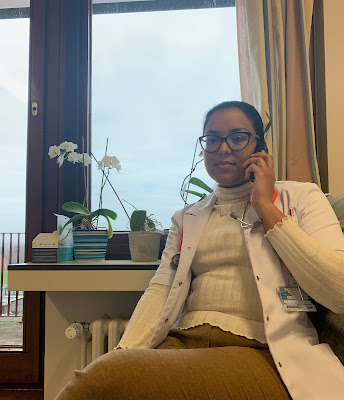A recap of yesterday and today.
I sincerely apologise to all of you that were looking forward to reading a post yesterday. It was just one of those days. I was so exhausted when I got home, I just didn’t have the strength to publish a post. I called it an early night and got some much-needed rest.
Like I said on Monday, the plan for Tuesday was that I would follow the diagnostic procedures for some of our patients. Thus, I observed an ERCP. ERCP stands for Endoscopic Retrograde Cholangiopancreatography. The investigation is typically performed in liver, gallbladder, pancreatic and biliary duct problems. It is used both diagnostically and therapeutically.
To perform an ERCP, the patient must first be put to sleep. Then, with both an endoscope and x-ray, a skilled Gastroenterologist/Hepatologist visualises the organs. In the case I followed, the intervention was quick. It went well, and by evening, the patient was stable, had no complaints of pain, and was discharged home.
This is not always the case. Sometimes things don’t go as planned, and once in a while, post-intervention complications occur. It is crucial that before the intervention, these risks are explained to the patient. The most common complication is post-ERCP pancreatitis. Less common are perforation, haemorrhage, infections (e.g. cholangitis, acute cholecystitis), and bile duct injury and strictures. After the procedure, it is crucial to check the patient for signs and symptoms of pancreatitis. To do this, you physically examine the patient and ask about any new or worsened abdominal pain since the intervention. If there is no pain, it is unlikely that the patient has pancreatitis.
Today was similar to Monday. In the morning, my doctor had to go to outpatient consultations. She gave me a phone in the event there was something urgent with any of our patients, and I was left to review the patient files on my own.
 |
| Me taking a call in the doctor's office on the ward. |
I went through each patient file one by one. I made sure that any orders for labs and imaging were placed and matched with our plan from yesterday. If not, I made the necessary adjustments. I reviewed each patient's vitals taken in the morning for any irregularities. I checked the results of their blood work taken to see if they required immediate attention and treatment. I also followed up on any imaging results to see what the conclusions were.
In the afternoon, there was an hour-long presentation by a professor of Gastroenterology about Celiac's disease. This was quite interesting and informative. By the time it ended, my doctor had returned to the ward. I presented each patient to her and emphasised what I thought were the most important things. She expressed how extremely impressed she was by my thoroughness. I was so happy to hear this because I was worried about whether or not I was focusing on the wrong things.
We went to do the ward rounds with the professor. Following this, we returned to the doctor's office. Now, it was time to make notes, and since my doctor was at consultations till mid-afternoon, she had a ton of administrative work to catch up on for our patients. I finished the notes I had to, and just like that, my day was done.

Comments
Post a Comment